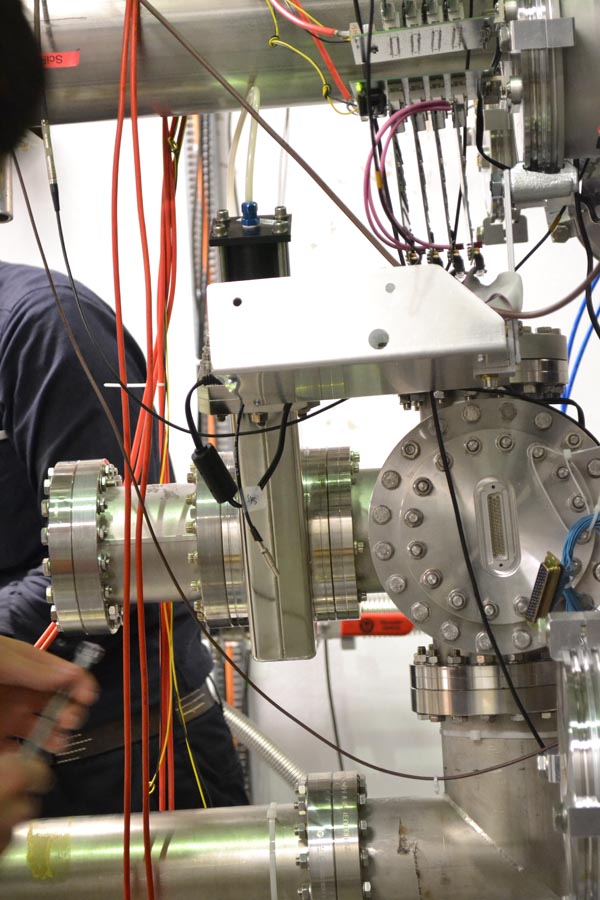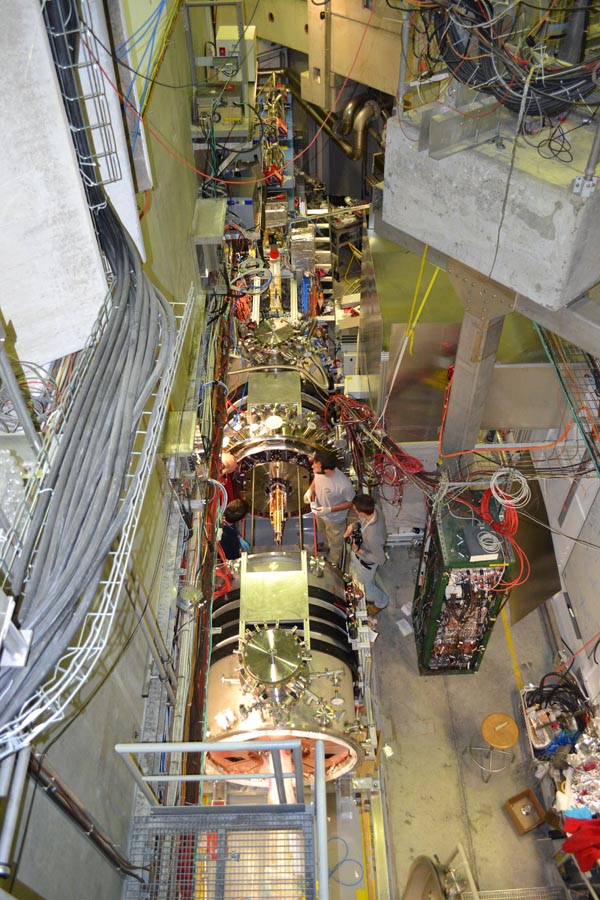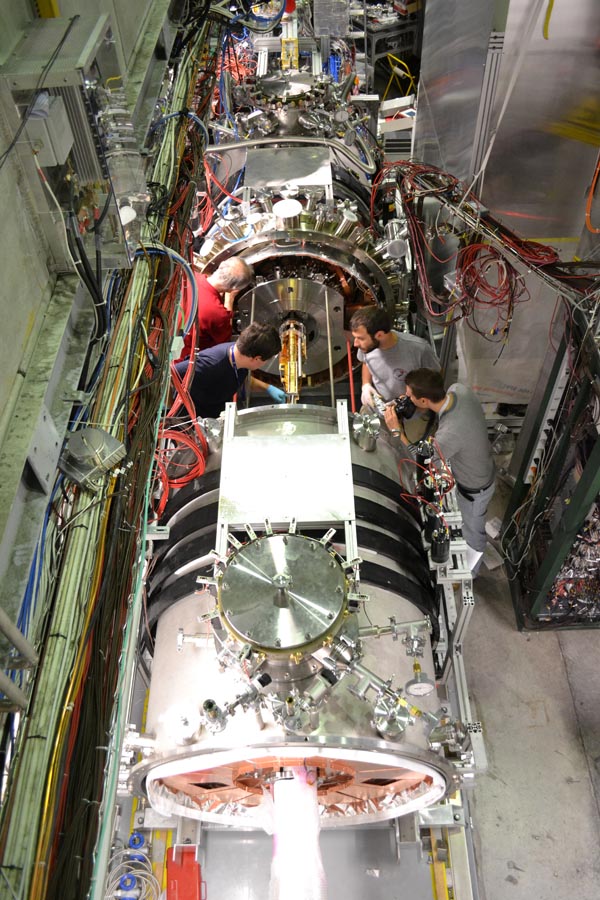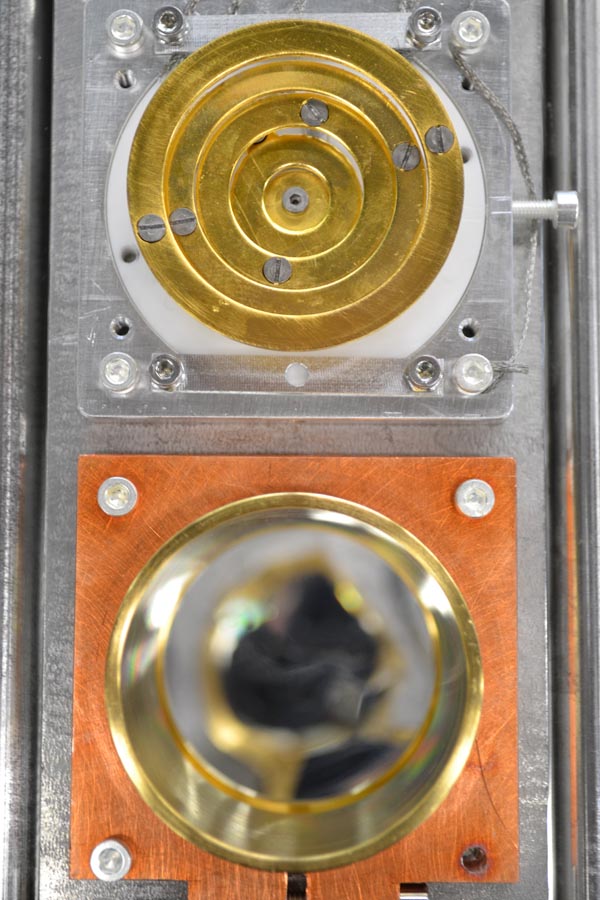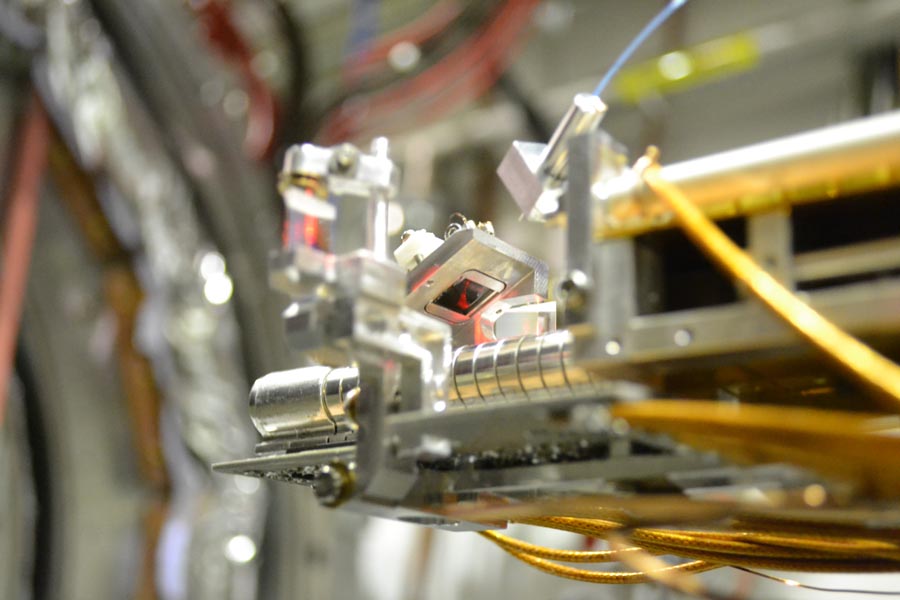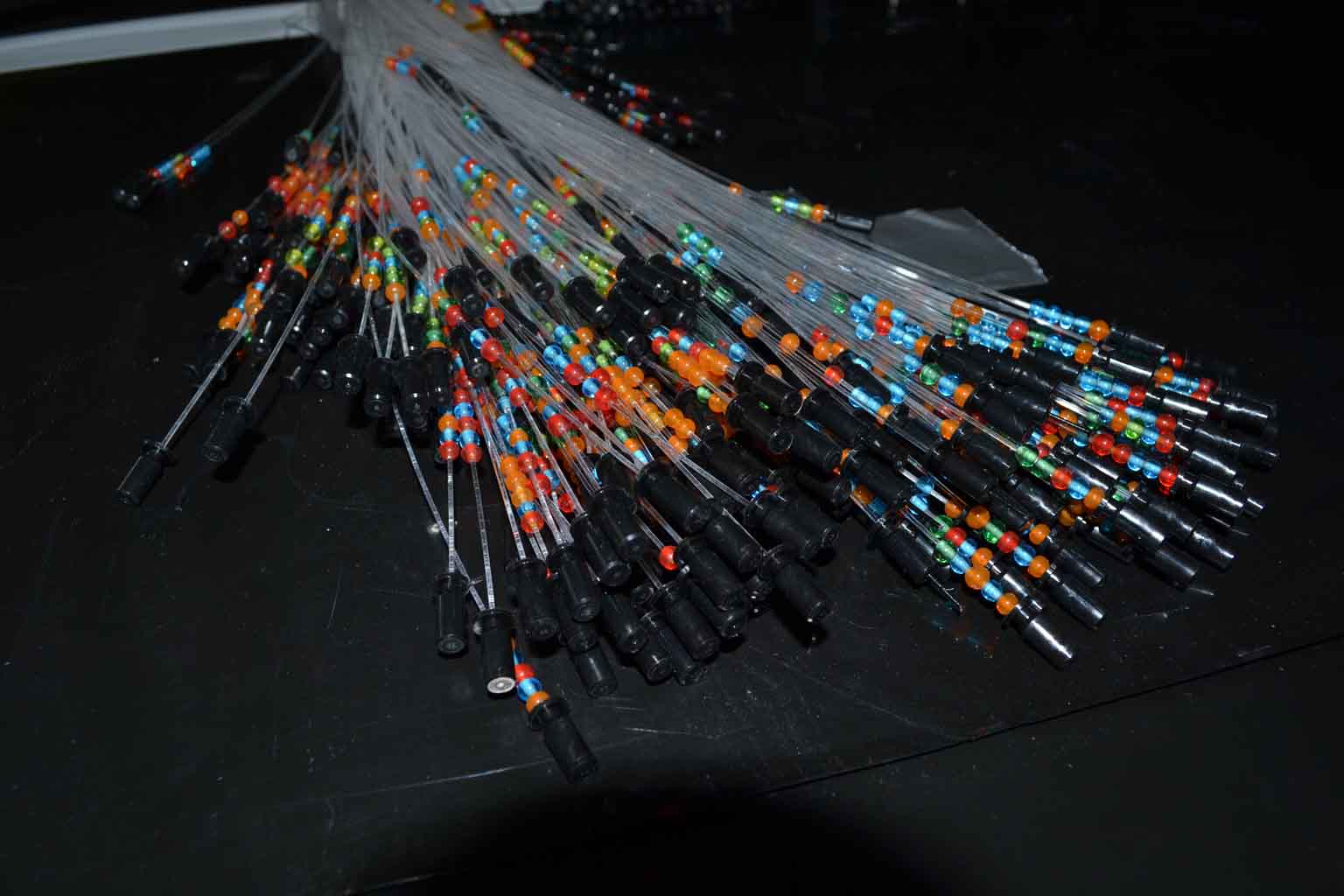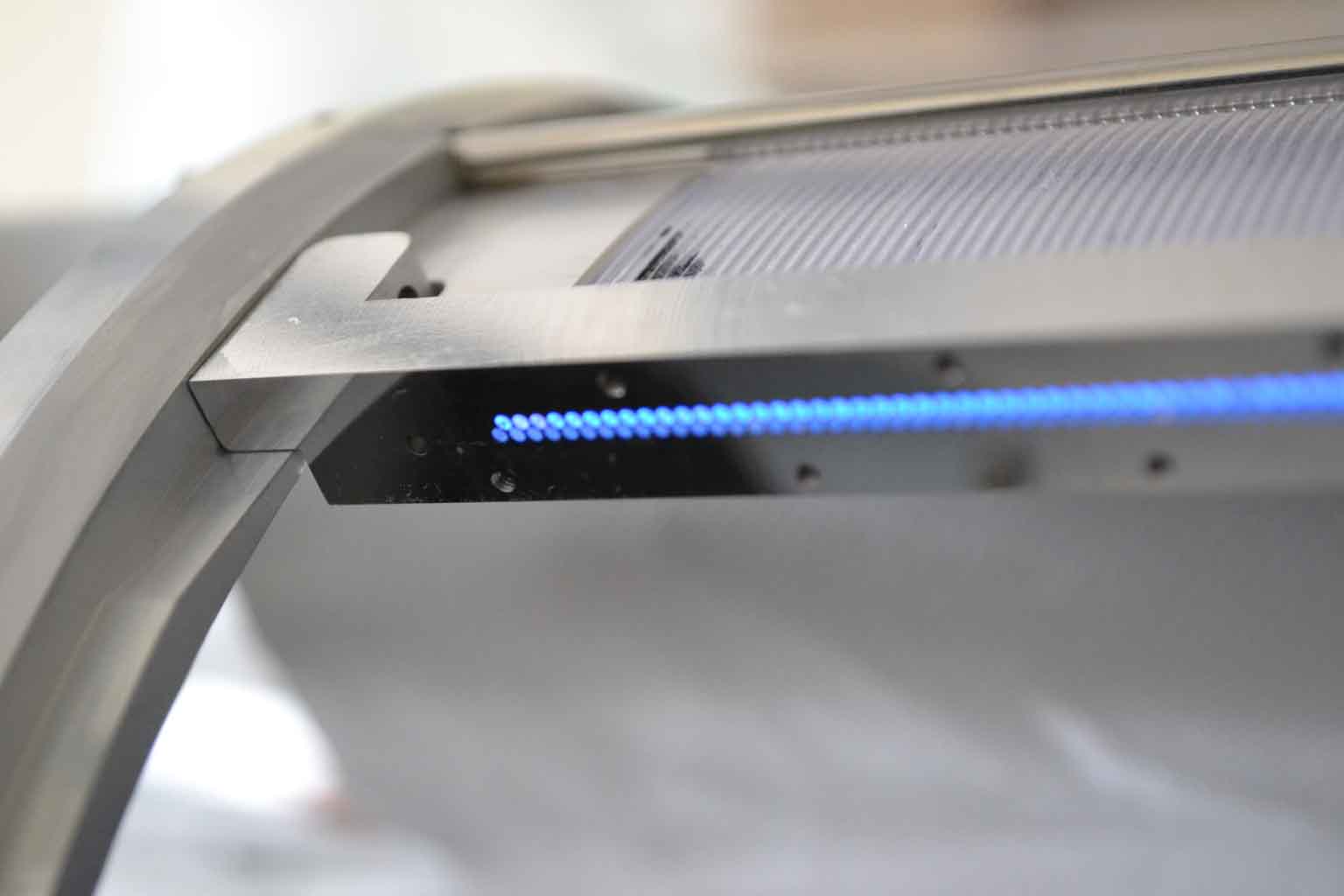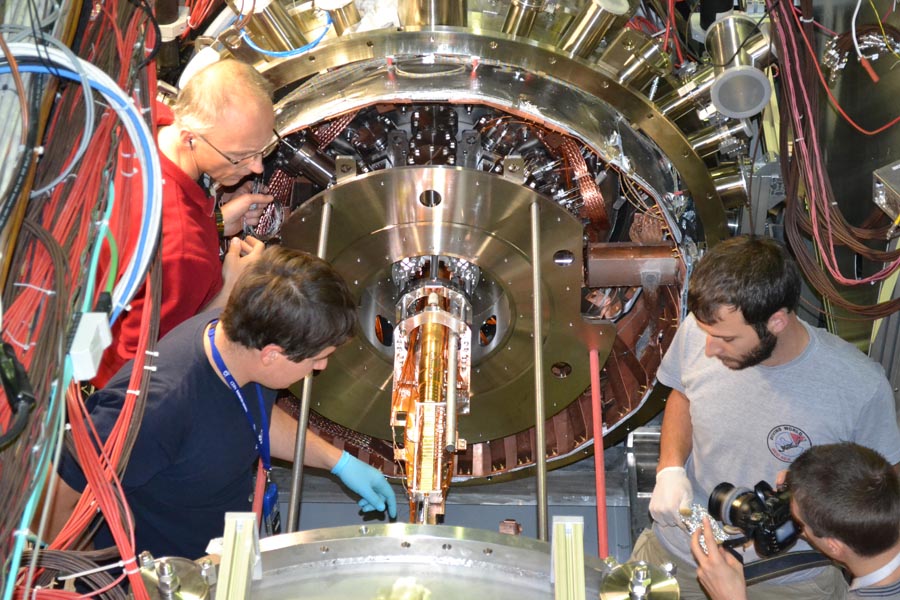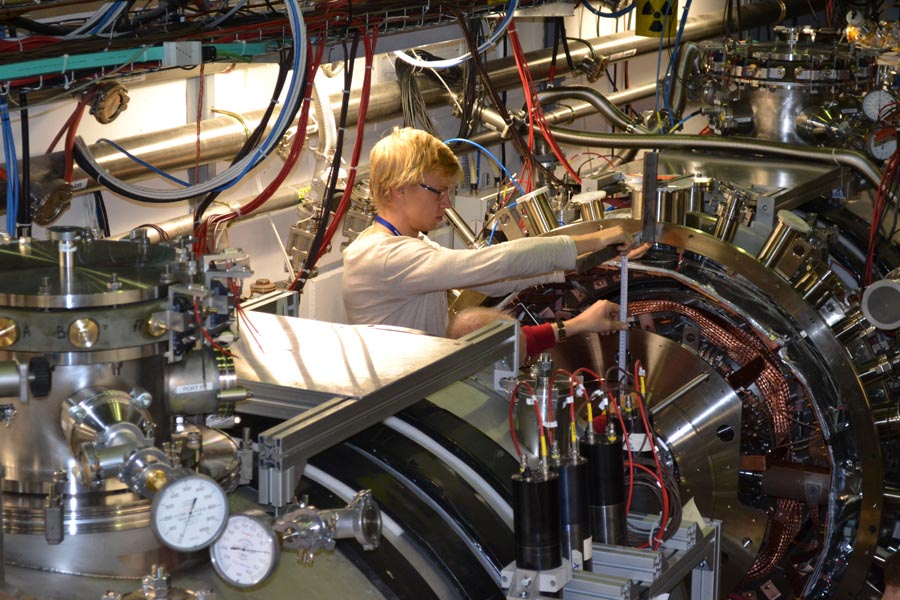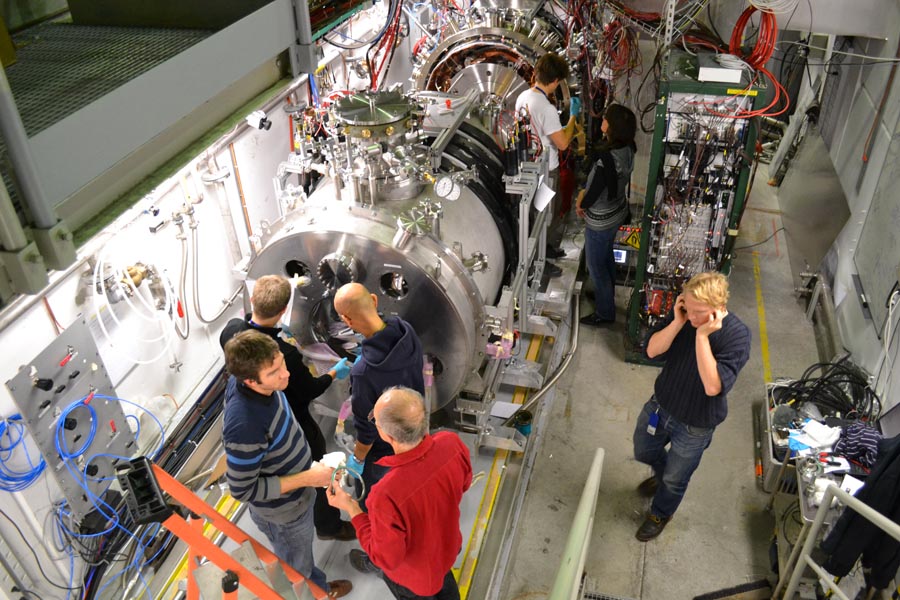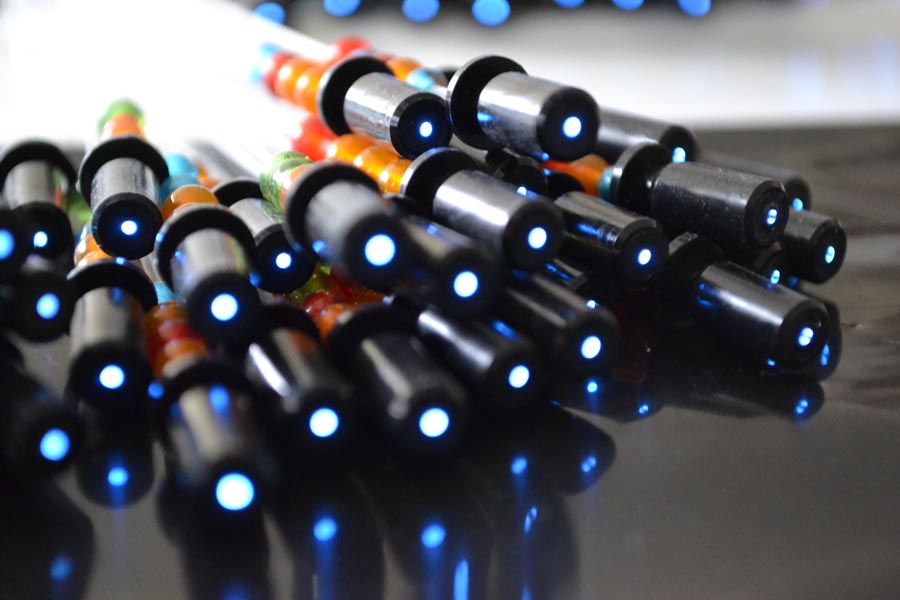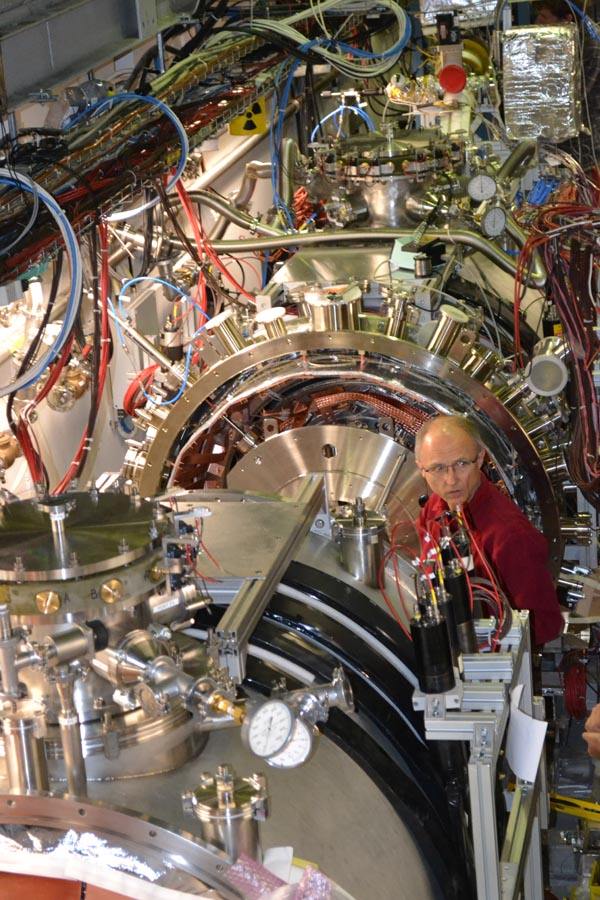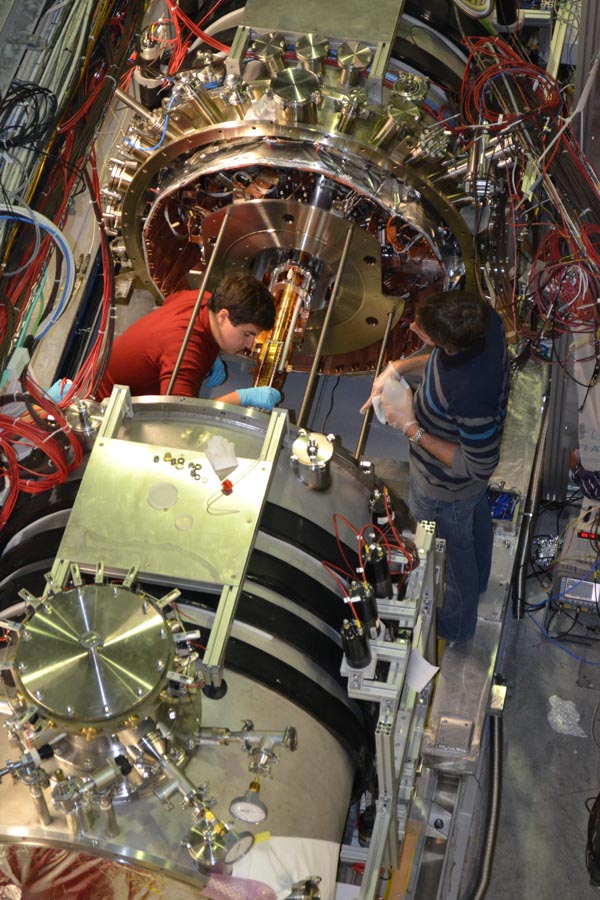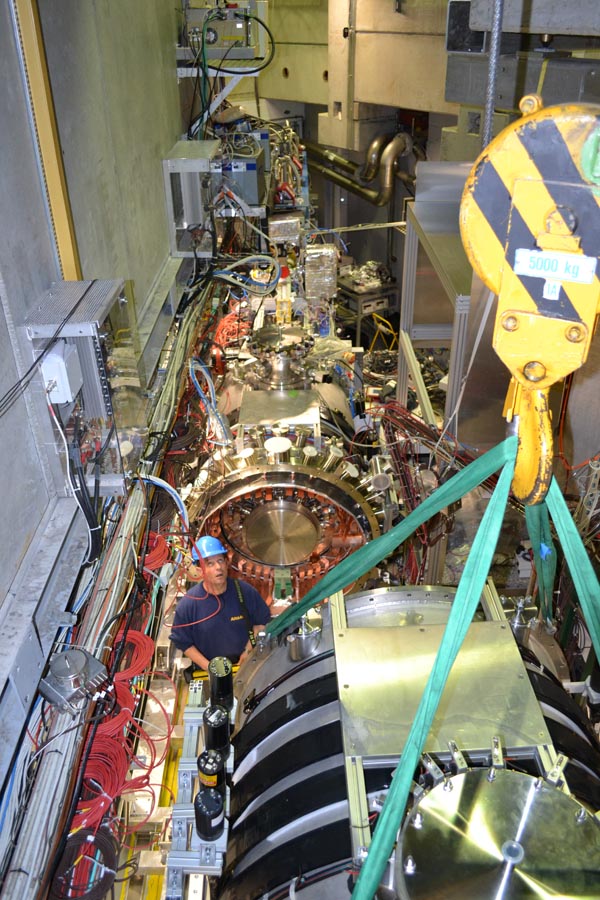The primary scientific goal of the Antihydrogen Experiment: Gravity, Interferometry, Spectroscopy (AEgIS) is the direct measurement of the Earth's gravitational acceleration, g, on antihydrogen.
AEgIS is a collaboration of physicists from a number of countries in Europe and from India. In the current phase of the experiment, the collaboration is using antiprotons from the Antiproton Decelerator to make a pulsed beam of antihydrogen atoms. They will then pass the antihydrogen beam through an instrument called a Moire deflectometer coupled to a position-sensitive detector to aim to measure the strength of the gravitational interaction between matter and antimatter to a precision of 1%.
A system of gratings in the deflectometer splits the antihydrogen beam into parallel rays, forming a periodic pattern. From this pattern, the physicists can measure how much the antihydrogen beam drops during its horizontal flight. Combining this shift with the time each atom takes to fly and fall, the AEgIS team can then determine the strength of the gravitational force between Earth and the antihydrogen atoms.
In 2018, AEgIS demonstrated the first pulsed production of antihydrogen atoms, by interacting pulse-produced positronium (an atom consisting of only an electron and a positron) with cold, trapped antiprotons. This was a necessary step towards the required pulsed beam of antihydrogen and also opens the door to other physics topics, which build on forming beams of pulse-produced positronium and also pulse-produced antiprotonic atoms, where the orbiting electron of an atom is replaced by an antiproton.
